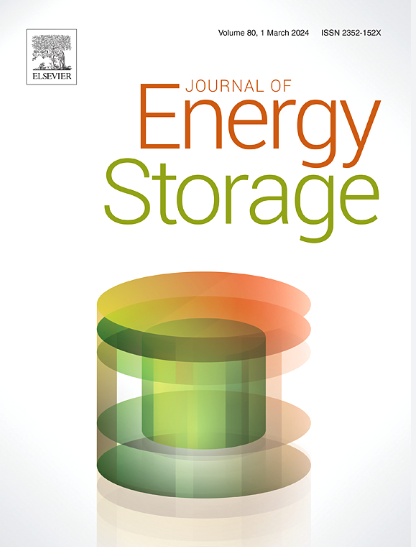Multi-functional electrolyte additive facilitating reversible and uniform zinc deposition for sustainable alkaline zinc-iron flow batteries
IF 8.9
2区 工程技术
Q1 ENERGY & FUELS
引用次数: 0
Abstract
Alkaline zinc‑iron flow batteries (AZIFBs) have undergone rapid development since their merits of high open-circuit voltage, exceptional battery efficiency, and robust system stability. However, AZIFBs always suffer from the issues of the side reaction and zinc dendrites lead to irreversible and uneven zinc deposition, ultimately shortening the battery lifespan. To address these challenges, a multi-functional additive of sulfoxide (SL) is added as a typical [Zn(OH)4]2− electrolyte. The comprehensive research reveals that the incorporation of SL as an additive effectively modifies the solvation structure of electrolytes. Consequently, the functional additive enhances the stability of the electrolyte, suppressing the hydrogen evolution reaction, corrosion, and side reaction, thereby enhancing the reversible deposition of zinc. Furthermore, the functional additive slows down the diffusion coefficient during the deposition process, inducing even nucleation. Therefore, the multi-functional electrolyte additive enables reversible and uniform zinc deposition. As a proof of concept, the AZIFBs with multi-functional additive demonstrated remarkable stability with over 320 cycles. Furthermore, the average coulomb efficiency reached about 99.53 %, while the energy efficiency hovered around 75.54 % at a current density of 80 mA cm−2, which is much higher than that of a typical electrolyte. Even at a large current density of 160 mA cm−2, the coulomb efficiency was still maintained exceeding 99 %. This work offers a strategy for designing the multi-functional electrolyte additive for sustainable zinc-based flow batteries.

多功能电解质添加剂,促进可逆均匀的锌沉积,用于可持续碱性锌-铁液流电池
碱性锌铁液流电池(azifb)由于具有开路电压高、电池效率高、系统稳定性好等优点,得到了迅速的发展。然而,azifb一直存在副反应和锌枝晶导致不可逆和不均匀的锌沉积的问题,最终缩短了电池寿命。为了解决这些问题,我们添加了一种多功能的亚砜(SL)添加剂作为典型的[Zn(OH)4]2−电解质。综合研究表明,SL作为添加剂的加入有效地改变了电解质的溶剂化结构。因此,功能添加剂增强了电解质的稳定性,抑制了析氢反应、腐蚀和副反应,从而增强了锌的可逆沉积。此外,功能添加剂在沉积过程中减缓了扩散系数,诱导均匀成核。因此,该多功能电解质添加剂可实现可逆且均匀的锌沉积。作为概念验证,具有多功能添加剂的azifb在超过320次循环中表现出卓越的稳定性。此外,在电流密度为80 mA cm−2时,平均库仑效率达到99.53%左右,而能量效率徘徊在75.54%左右,远高于典型电解质。即使在160 mA cm−2的大电流密度下,库仑效率仍然保持在99%以上。本研究为可持续发展的锌基液流电池提供了一种多功能电解质添加剂的设计思路。
本文章由计算机程序翻译,如有差异,请以英文原文为准。
求助全文
约1分钟内获得全文
求助全文
来源期刊

Journal of energy storage
Energy-Renewable Energy, Sustainability and the Environment
CiteScore
11.80
自引率
24.50%
发文量
2262
审稿时长
69 days
期刊介绍:
Journal of energy storage focusses on all aspects of energy storage, in particular systems integration, electric grid integration, modelling and analysis, novel energy storage technologies, sizing and management strategies, business models for operation of storage systems and energy storage developments worldwide.
 求助内容:
求助内容: 应助结果提醒方式:
应助结果提醒方式:


